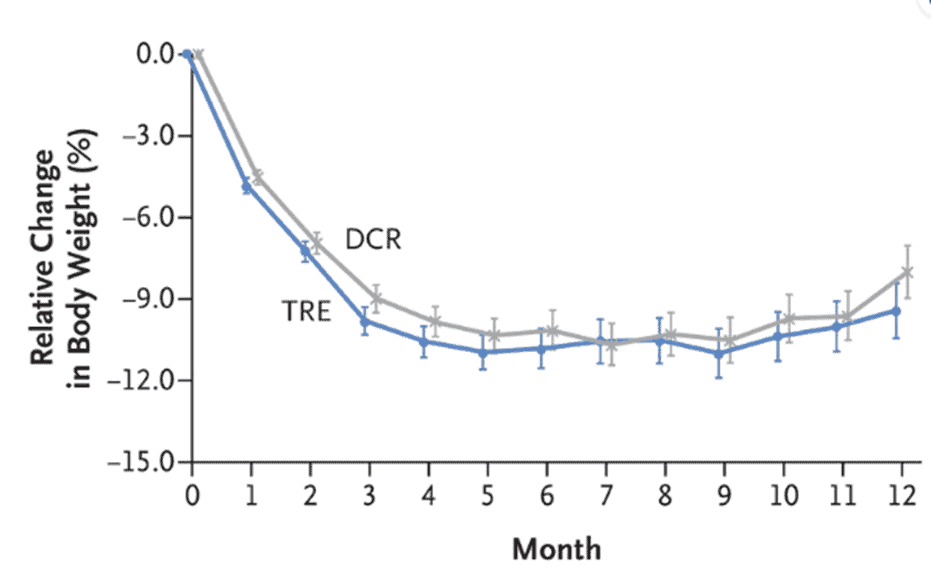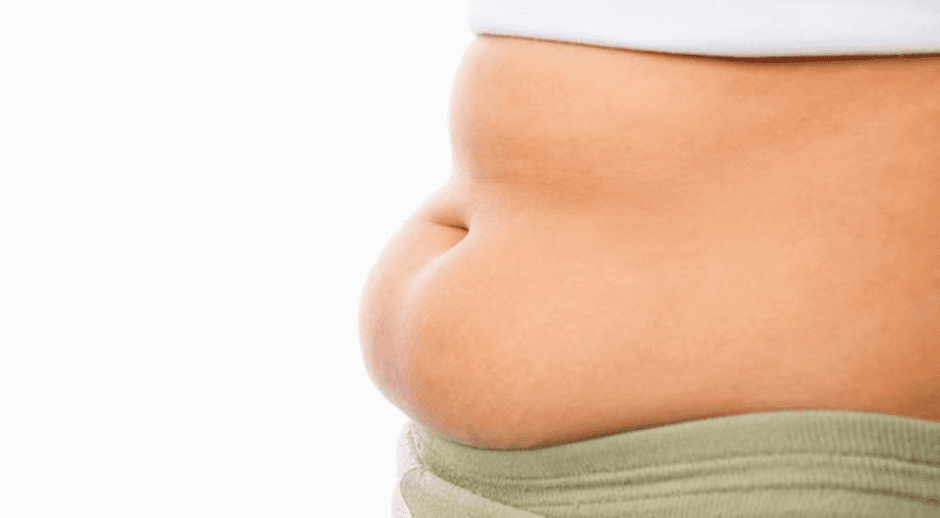Embark on a 16-hour fast and uncover a pathway to better health. This popular intermittent fasting regime, known as the 16:8 diet plan, restricts your eating window to 8 hours, promoting weight loss, mental clarity, and improved metabolic health.
During the fasting period, your body transitions to fat burning, a process that not only aids in weight loss but also has potential benefits in preventing type 2 diabetes and other obesity-associated conditions.
Discover the transformative 16-hour fast benefits as we delve into practical tips and scientific insights on this health-enhancing practice.
BONUS: Download Free Data-Driven Fasting Book That Has Helped Thousands Of People Personalize Their Fasting Routine
- What Are the Benefits of 16-Hour Fasting?
- What Happens When You Fast for 16 Hours?
- Early-Time Restricted Eating
- What Are the Downsides of 16-Hour Fasting?
- Is 16 Hours of Fasting Enough?
- How Long Does It Take to See Results of 16-Hour Fasting?
- Is There Anything Else I Should Know About a 16-Hour Fast?
- Summary
- More
What Are the Benefits of 16-Hour Fasting?
A 16-hour fasting window, with eight hours when you’re permitted to eat, has become one of the most popular intermittent fasting windows.
Essentially, a 16:8 fasting window restricts the time you can eat to eight hours.
Some reported benefits of TRE include weight loss from eating fewer calories, autophagy, mental clarity, and better metabolic health.
Limiting the time we allow ourselves to eat makes overeating harder. Thus, TRE can be helpful for weight loss.
When not eating, our bodies use old, worn-down cells and other parts that aren’t working optimally for fuel. This is known as autophagy, which is beneficial for conditions like cancer, autoimmunity, neurodegenerative disorders, general and systemic inflammation, and diabetes. However, while fasting studies in rats and C. elegans worms show beneficial effects of autophagy, little is known about the fasting routine required to achieve autophagy in humans.
Eating all the time is not optimal for the human digestive tract. Moreover, eating can leave us with many inflammatory substances that cause brain fog, lethargy, low energy, fatigue, mood changes, and more if we have an imbalanced microbiome (i.e., poor gut health). So, abstaining from food and giving your body a break can increase cognitive output.

Fasting also forces our bodies to use stored energy (i.e., body fat) for fuel when there is no food coming in via our mouths. Over time, this can lower our body weight below our Personal Fat Threshold, which can help us improve insulin sensitivity and metabolic health. However, this can be taken too far, which we will discuss in more detail below.
But although many find intermittent fasting helpful, for the reasons outlined above, there is still debate around whether there is any benefit beyond the fact that it enables many people to achieve a long-term energy deficit.
A 2020 study by Ethan Weiss caused a stir when it concluded that there was no benefit to TRE vs calorie restriction. A recent Cineese study by Jiang et al. also had similar findings. However, despite these findings, the continual growth in the popularity of the 16:8 intermittent fasting model is testament to the tangible benefits experienced by many individuals across the globe.

What Happens When You Fast for 16 Hours?
Despite the controversy, there are still many benefits to restricting your eating window.
For starters, limiting the time you eat your food propagates less mindless eating, which most of us do after dark!

Additionally, a 16-hour fast could give you more free time. Eating, cooking, running to the pantry, and even picking up takeaway are time-consuming.
Setting your eating window not only limits the amount of time you waste on food, but it might also allow you to make more healthful decisions with the extra time you have and with the myriad benefits associated with 16-hour fasting, it’s a lifestyle change worth considering for long-term health and wellness.
Early-Time Restricted Eating
Although it appears that the benefits of intermittent fasting may be simply due to the reduced energy intake due to the limited time window, other recent research has shown benefits to modifying when you eat. Similarly, the 16:8 fasting regimen underscores the importance of aligning eating patterns with our biological clocks, which could further enhance the health benefits derived from this practice.
Many people, particularly in the ancestral health community, practice early time-restricted eating (eTRF) to ensure they eat when the sun is up to align their eating with their circadian rhythm. Your circadian rhythm, or your body’s self-timer, is regulated by the repetitive activities you do daily (i.e., waking, sleeping, eating, working out). Eating your first meal is another signal to your body that it’s time to rev up the metabolism to start the day.
Dysregulated circadian biology has been linked to everything from cancer to obesity. So, eating most of your food when it’s light outside is also ideal for aligning your metabolism with your circadian biology.

Several recent studies have been published supporting early time-restricted eating (eTRE).
- In Macronutrient (im)balance drives energy intake in an obesogenic food environment: An ecological analysis (Raubenheimer et al., 2022), researchers found that people who started the day with lower protein % foods and meals tended to eat more across the day. Their cravings drove them to try to meet their protein requirement for the day. They also noted that many people consume foods with lower protein % later in the day (i.e., hyperpalatable comfort foods), making them even more likely to overeat.
- In Interplay of Dinner Timing and MTNR1B Type 2 Diabetes Risk Variant on Glucose Tolerance and Insulin Secretion: A Randomised Crossover Trial (Saxena et al., 2022), the researchers found that high carbohydrate intake when melatonin was high led to impaired glucose tolerance. So, eating your largest meal, particularly carbohydrates, just before you go to sleep is not ideal for blood glucose control.
- In Late isocaloric eating increases hunger, decreases energy expenditure and modifies metabolic pathways in adults with overweight and obesity (Scheer et al., 2022), researchers found that eating later in the day increased hunger. Thus, people who ate later in the day tended to overeat more than those who ate earlier. In addition, people who ate later in the day tended to use less energy than those who ate earlier when they were active.
These observations also align with our experience in our Data-Driven Fasting Challenges.
- People who eat a large meal closer to going to bed tend to have higher waking glucose. Digesting your largest meal overnight is also not great for sleep as it keeps your metabolism high when you should be resting.
- Many people who see higher glucose in the morning tend to benefit from prioritising protein at their first meal.
- Starting your day with a robust higher protein % meal leads to greater satiety across the day and lower and more stable blood glucose. In addition, without wild swings in their glucose (i.e., reactive hypoglycaemias), they are better able to manage their appetite and thus eat less.
To learn more about the satiety effects of protein, check out The Protein Leverage Hypothesis.
What Are the Downsides of 16-Hour Fasting?
Most articles report weight loss, better blood glucose control, longevity, and metabolic health improvements. However, these effects depend on what and how much you eat in your chosen window.
Many believe they can eat whatever they want, so long as they tighten their window enough. But, as mentioned above, unless your chosen eating window leads to eating less, you’re unlikely to experience any benefit.
Unfortunately, with increasing hunger, many end up gravitating to energy-dense, nutrient-poor, hyper-palatable foods that enable them to eat much more than they did before.
We typically make poorer food choices when we are hungrier. The longer and longer we go without food—especially if we are active or stressed—the more likely we are to eat without control when we allow ourselves to eat again. As our eating window shrinks more and more, we’re more likely to choose less-than-optimal foods, too.
Overriding out your innate hunger cues when you need food can lead to dysregulated hunger signals. When you eat again, you will be less likely to hear your body’s healthy hunger signals.
When we don’t eat after we’ve already used up our easily accessible energy reserves (i.e., muscle and liver glycogen), or if we don’t eat after a workout or an activity that requires fuel, our bodies are prone to catabolising their own precious lean muscle mass to power themselves. If this happens repeatedly, it can result in less lean muscle mass and a lowered metabolic rate over time.
Our bodies can perceive stress when we go for long periods without food over the long term. As a result, the body begins releasing stress hormones like cortisol, which can contribute to insulin resistance, stubborn body fat, weight gain, poor sleep, and hormone imbalance over time.

Many believe they can eat whatever they want as long as they stick to their chosen fasting window. But unfortunately, this is not true.
While a 16:8 window works well for many and allows them to get the protein and nutrients they need, others assume that compressing their window further (e.g., 20:4 or OMAD) will yield better results. Unfortunately, this often ends badly.
Once people have gone without food for 20 hours or so, they often become ravenously hungry and gravitate to energy-dense, nutrient-poor, low-protein foods. This is because protein and other nutrients like calcium, sodium and potassium are critical for satiety.
Because protein is so satiating, it’s harder to eat enough in a compressed eating window. But consuming more energy than you require in a limited window is still possible, particularly if you’re extremely hungry and believe you can eat anything you want, so long as the window is tight enough.
The table below shows the target protein intake we recommend people achieve before they dive into our Data-Driven Fasting Challenge to improve satiety and minimise loss of lean muscle mass when they try to lose weight. This targets 1.4 g/kg LBM, which is higher than the (minimum) RDA of 0.8 g/kg but still less than the 2.2 g/kg recommended by many as optimal.
| height (cm) | height (inches) | female protein (g) | male protein (g) |
| 150 | 59 | 56 | 76 |
| 155 | 61 | 60 | 81 |
| 160 | 63 | 64 | 86 |
| 165 | 65 | 68 | 92 |
| 170 | 67 | 72 | 98 |
| 175 | 69 | 77 | 103 |
| 180 | 71 | 81 | 109 |
| 185 | 73 | 86 | 116 |
| 190 | 75 | 90 | 122 |
| 195 | 77 | 95 | 128 |
| 200 | 79 | 100 | 135 |
| 205 | 81 | 105 | 142 |
| 210 | 83 | 110 | 149 |
Protein expert Professor Don Layman recommends ‘bookending’ your day with protein to ensure adequate amino acids throughout the day. So, your first and last meal needs to be protein focussed.
While some people may thrive on two meals a day, others may need a snack in the middle to tide them over and manage hunger, so they are not ravenous later in the day. This interview with Professor Layman is an excellent deep dive into the importance of protein and meal timing.
Is 16 Hours of Fasting Enough?
Eating during a static period day in and day out may be suitable for one person for a certain period. However, for someone else—or even for the same person at a different time—the results and effects of a 16-hour eating window might not be as good. They might even be detrimental!
The period it takes for your body to burn through its energy reserves and move on to stored body fat is unique to you. Some people require more time in a fasted state, and some need less. What and when you eat each day should vary somewhat because your metabolic demands change daily.
Because most classic fasting schedules like 16:8 (16 hours fasting, 8 hours eating), 18:6, 20:4, and 24:1 are static—meaning they do not change—your body may struggle to keep up day in and day out. If your stress levels are higher, you do not eat enough the day before, or your activity levels increase, you might need to eat more, or you may need to eat sooner than your window allows.
If you do not eat when your body sends signals for you to eat, it will begin to burn through its liver and muscle glycogen stores. If—and when—you drain them, your body will start to burn body fat. There is a limit to how much energy your body can release from storage each day. Outside of that, it begins to break down precious lean body mass to supply its energy demands, and hunger rapidly increases.
Because your muscle mass is metabolically active, it’s responsible for revving up your metabolism; the more muscle you have, the more calories you burn at rest. As you push through your fast for longer in the pursuit of #metabolichealth and #fatloss, you might be doing the exact opposite of your initial goal! Once you lose muscle mass, fat often accumulates in its place, which is not metabolically active, nor does it burn calories at rest.

Additionally, if you’re still consuming more energy than you’re using, the net effect of your everyday fast likely isn’t very beneficial. Sure, you’re not eating for 16 hours. But energy balance always applies.
Fasting can be helpful! But if you pay no attention to quality or quantity when you go to refeed, the amount of your body fat will not change, and the quality of your results won’t be as you’d hoped!
How Long Does It Take to See Results of 16-Hour Fasting?
While you may have come into this article ready to jump into a 16:8 (16 hours fasting, 8 hours eating) lifestyle, this article might have made you a little more apprehensive.
So there a better way to get the results you want with fasting without overdoing it?
Rather than only eating during an arbitrary window, Data-Driven Fasting uses your blood glucose to guide you when you need to eat. Rather than picking an arbitrary window that may have worked for others, DDF uses your glucose to ensure you are getting just enough restriction to make progress, but not so much you burn out or find yourself in a continual restrict-binge-restrict cycle as many do with a fixed eating window.
In our Data-Driven Fasting Challenge, we walk users through how to use a simple blood glucometer as a fuel gauge to determine when to eat. This method prompts people to eat when their blood glucose levels fall just below the blood glucose threshold that is normal for them, so they do not overdo it and fall victim to the ravenous hunger that often follows when their glucose drops too low.
By holding off from eating until your blood glucose drops just below your threshold, you’re allowing your body to draw down on your stored energy over time, but not so much that you begin to catabolise your own precious lean muscle mass.
If executed properly and someone does not ‘chase their trigger’ beyond the healthy limits, this method is a feasible and achievable option for people of all ages, body weights, sexes, and states of metabolic health.
Many of our DDF users see substantial weight loss and metabolic health improvements in as little as four weeks. To read more about some of their results, you can check out some of the past participants’ achievements here.
Whether you’re curious to dip your toes in with DDF or ready to commit to the program for some time, you can check out our DDF app and find your personalised glucose trigger.
For more on how DDF differs from extended fasting, a strict eating window or time-restricted eating, check out What Makes Data-Driven Fasting Different?
Is There Anything Else I Should Know About a 16-Hour Fast?
In DDF, we use your blood glucose as a fuel gauge to guide when you eat to suit your unique metabolism, lifestyle, exercise, and family commitments to ensure you are drawing down on your stored energy over time. In the end, you need to find a way to eat less energy than you use regardless of your given window.
To optimise your satiety so you can actually control your hunger during extended periods without food, it’s critical to pay attention to the quality of your food so you can maintain the quantity you want to consume.
Per our research, it’s become clear that nutrient density—or the number of nutrients per calorie of food—is the most critical parameter for eating fewer calories (and not bingeing hours after!).

While protein is the most satiating nutrient, others like potassium, sodium, and calcium also play a role. However, these nutrients as supplements do not have the same effect. Thus, refeeding with nutrient-dense whole foods in combination with DDF is the most effective way to get to your end goal and maintain it.
If you’re interested in learning how to optimise your nutrient density to use alongside DDF, you might enjoy our four-week Macros Masterclasses and Micros Masterclasses. In the Macros Masterclass, we walk users through determining their baseline macronutrient intake and slowly dialling up their protein and fibre—the most critical food parameters for satiety and nutrient density—while dialling back carbs and fat. In our Micros Masterclass, Optimisers learn how to fill their nutrient gaps to optimise their nutrient density.
Summary
- A 16:8 fast, or a 16-hour fasting window and eight-hour eating window, is a form of Time-Restricted Eating (TRE) that has become widely popular for metabolic health, weight loss, circadian rhythm, and control of inflammatory conditions.
- There are many pros to 16:8-style eating. However, depending on how you execute this way of eating, there could be some detriments, too!
- Sticking to a fixed eating window can push someone to overdo their fast, which can prompt someone to begin breaking down lean muscle mass and hurt their metabolism. Additionally, it can result in weight gain from uncontrolled hunger when someone goes to eat again, as well as someone falling out of touch with their innate hunger cues.
- Using a program like DDF to help you determine when to eat and what to eat when you go to refuel can help you get all the positive effects of fasting without the downsides. Additionally, it can help you preserve your precious lean muscle mass, which fuels metabolism. You can check out our DDF challenges or our DDF app to get started.
More
- Data-Driven Fasting: How to Use your Blood Glucose as a Fuel Gauge
- How To Use a Continuous Glucose monitor for weight loss (and why your CGM Could Be Making You Fat)
- QuickStart Guide – Data-Driven Fasting
- Keto Lie #7: Fasting for Longer is Better
- Hunger Training… How to Use Your Glucometer as a Fuel Gauge to Train Your Appetite for Sustainable Weight Loss
- Data-Driven Fasting Challenge



Excellent article Marty! DDF connects people with their hunger signals and is “magical” from that point of view, for maintenance but also for losing weight.
TRE in my experience sets a nice routine for our bodies, they like to eat at regular times, I am never hungry outside my eating window (14-max.16h usually) and I trained my body to behave like this using DDF.
A couple of the DDF app link takes me to some other DDF in the App Store. Not associated with fasting.
One of the links took me to a page and I signed up. But it’s not an app, just a website. Is that correct?
Thanks for the heads up. Fixed the links. You can access the DDF app here – https://app.datadrivenfasting.com/